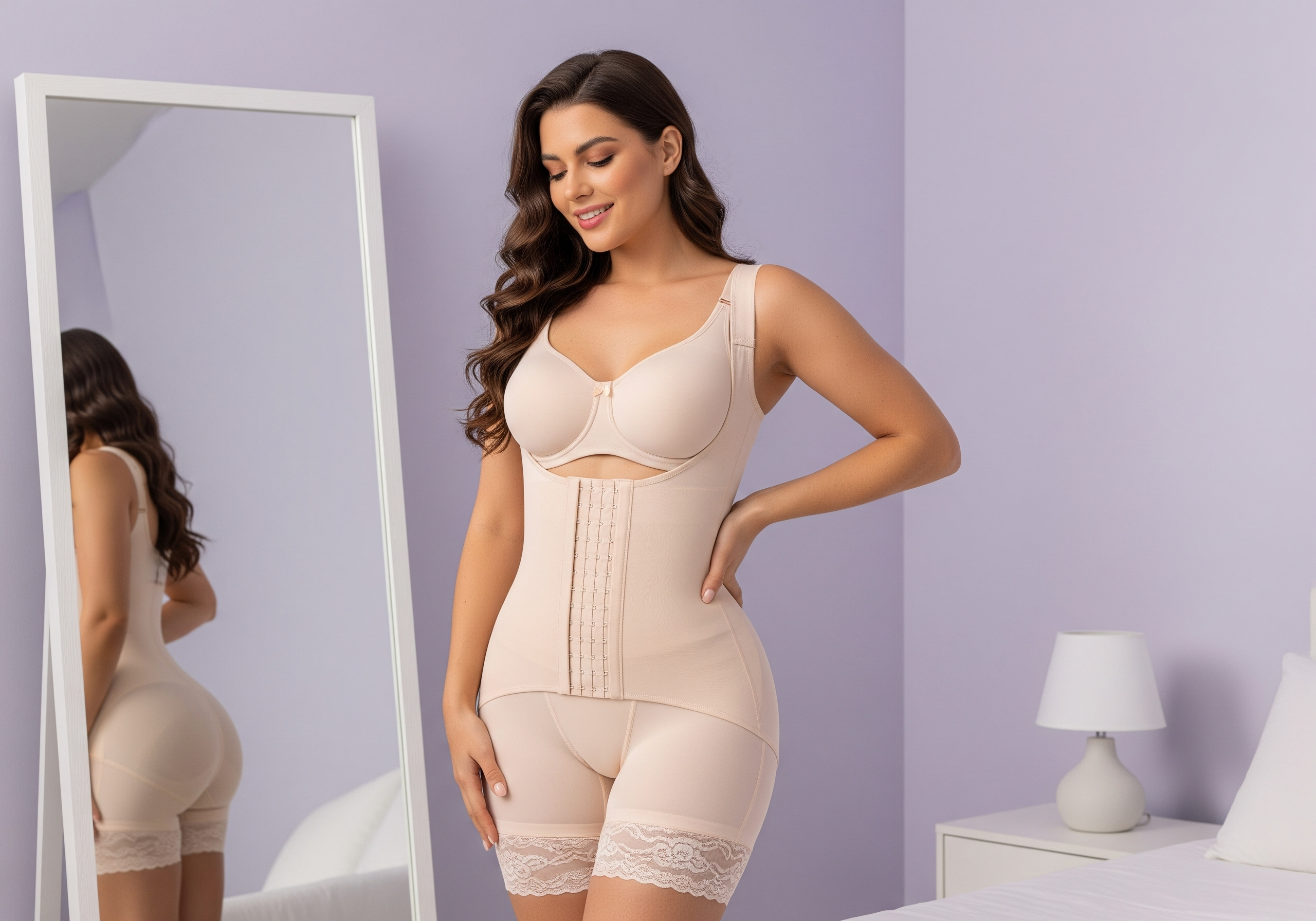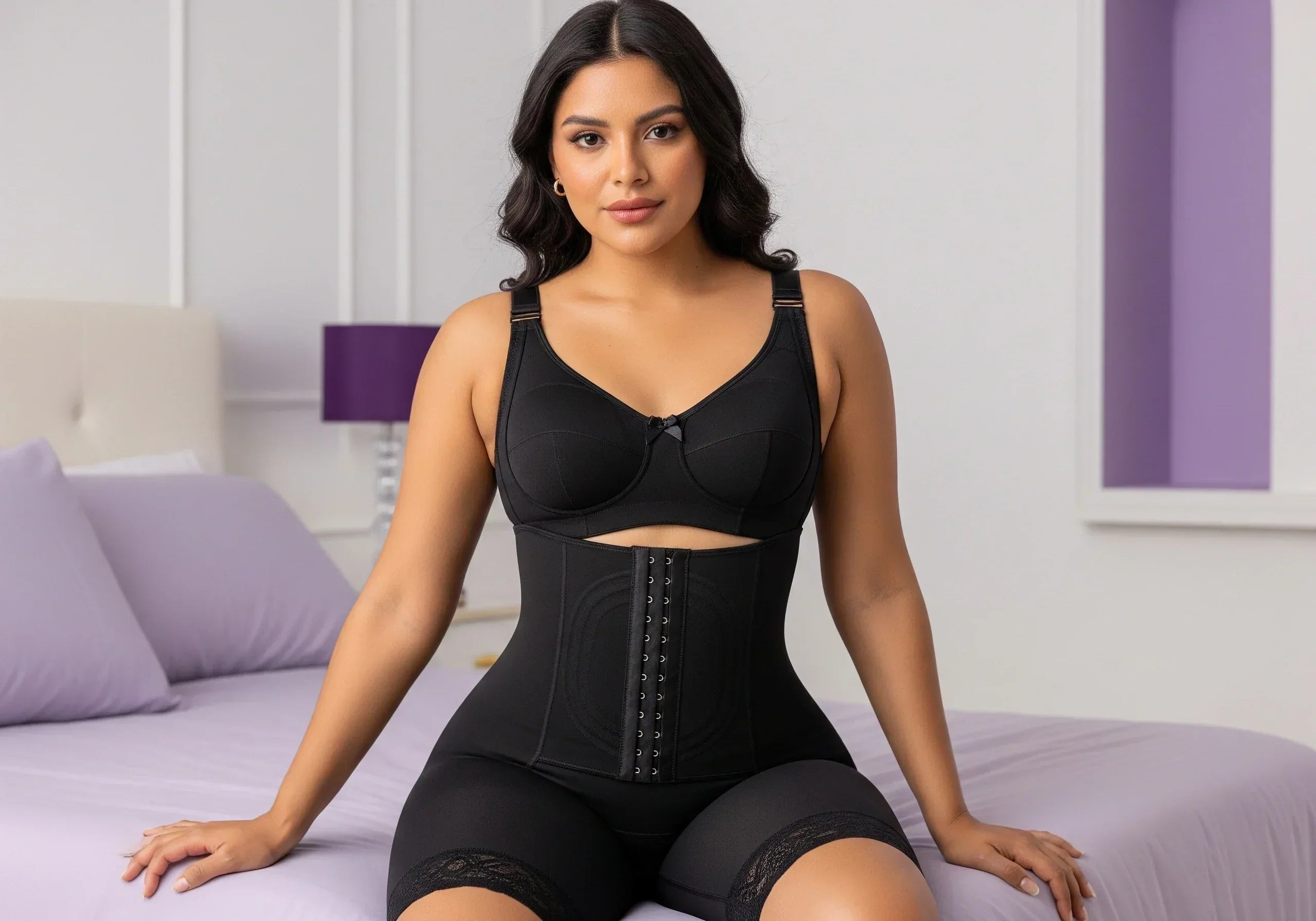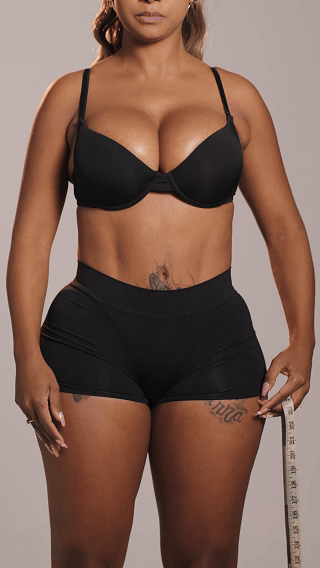One of the most common questions patients have is: How tight should my faja really be? If it’s too loose, it won’t provide enough compression. If it’s too tight, it can restrict circulation and cause pain. In this article, we’ll explain how to find the perfect fit for your faja so you can recover safely and comfortably.
The Role of Compression in Recovery
The right amount of compression is crucial. It reduces swelling, supports tissues as they heal, improves circulation to aid in faster recovery, and enhances your final results by encouraging smoother contours after liposuction, BBL, or a tummy tuck.
Signs Your Faja Is Too Tight
Key warning signs that your faja is too tight include numbness or tingling in your skin, shortness of breath, visible marks or indentations that don’t fade, and difficulty moving or sleeping comfortably.
Signs Your Faja Is Too Loose
If there are excess gaps between your body and the garment, if the fabric folds or bunches, or if you feel a lack of support in the surgical areas, your faja is likely too loose and won't be effective.
Finding the Ideal Faja Fit
The ideal fit should be snug but not painful. It should feel firm around your body without restricting your breathing. Many fajas come with adjustable hooks that you can tighten as swelling decreases. Most importantly, always follow your surgeon’s guidance on the correct compression level.
Tips for Getting the Right Fit
Always measure correctly using your waist and hip measurements, not clothing sizes. Choose a Stage 1 faja for softer compression right after surgery, and transition to a Stage 2 faja for firmer compression later. You should be able to sit, stand, and walk without extreme discomfort.
FAQs About Faja Tightness
Can a faja be dangerously tight?
Yes. If it restricts breathing, circulation, or causes severe pain, it’s unsafe and must be adjusted or replaced.
Should my faja feel different over time?
Yes. As swelling decreases, your faja may feel looser. This is when it’s time to move to the next size or a tighter hook setting.
How do I know if swelling is normal or caused by a poor fit?
If swelling worsens or doesn’t improve with consistent wear, consult your surgeon immediately.
Conclusion
Your faja should feel like a supportive hug—not a vise grip. The right amount of tightness ensures you heal safely and achieve the best results. Always listen to your body and your surgeon.
Start with a Stage 1 faja for gentle support, then transition to a Stage 2 faja as you heal. For wholesale inquiries, our official distributors are Cata1og.com and Catalog Mexico.


















